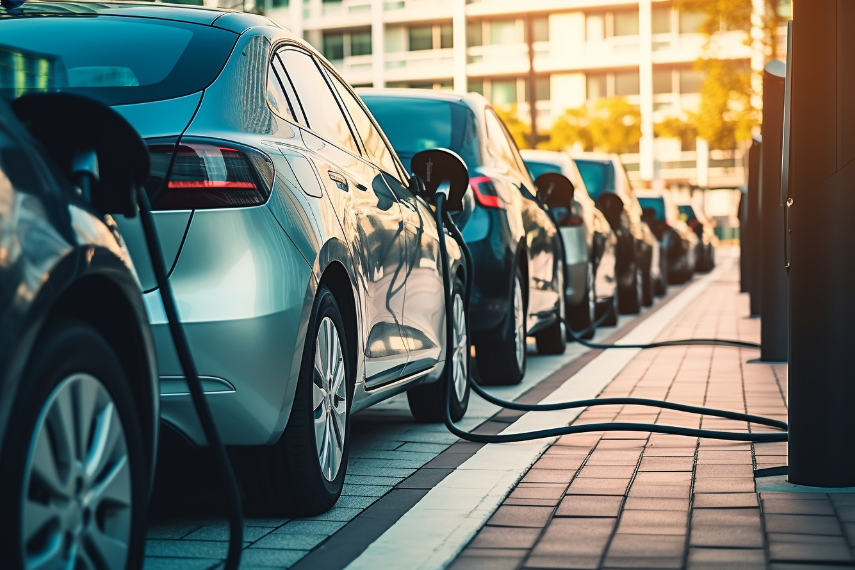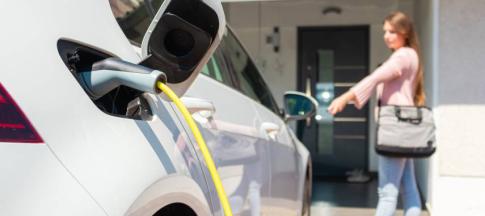
In recent years, the number of Brits driving electric vehicles (EVs) and electric cars has grown. Here, we break down the environmental pros and cons of EVs, and what they might mean for you.
How do electric cars work?
Unlike petrol- and diesel-fuelled cars with an internal combustion engine (also known as ICEs), EVs are powered by rechargeable batteries.
Energy stored in these batteries is converted directly into power that drives the electric motor and the wheels. The batteries can be recharged using a cable, like a smartphone.
A process called regenerative braking sees kinetic energy (caused by movement) converted into electricity. This is then fed back into the batteries, and recharges them when you lift off the accelerator.
Are electric cars good for the environment?
Generally, EVs are considered better for the environment because they:
- emit zero exhaust emissions
- aren't fuelled by fossil fuels
- help to reduce air pollution
- reduce greenhouse emissions
- help to improve air quality (especially in cities and built-up areas)
Initially, EVs are currently quite carbon intensive to build – largely because their batteries are complicated to make.
But studies have shown that EVs more than make up for this initial offset in carbon emissions over the lifetime of their use.
So while EVs could be considered more damaging to the environment at first, they make up for this initial impact by being much less damaging once they’re in use.
What are the advantages of electric cars?
EVs present lots of advantages. And as production methods and technology advance, more benefits are being discovered every year.
We’ve broken down a few of the key pros to driving an EV below.
Environmental benefits
Petrol- and diesel-powered cars produce huge amounts of environmentally damaging waste gases. But EVs don’t emit any exhaust emissions at all.
That’s because electricity doesn’t produce any waste products, so there’s no need for EVs to have an exhaust.
Ultimately, more EVs on UK roads means fewer greenhouse gasses produced, reductions in air pollution, and improved air quality (especially in cities).
Lower running costs
Initially, buying an EV means spending a little more. However, the costs of then running an EV are usually less than those of running a petrol or diesel car.
Electricity is cheaper than petrol or diesel, so EVs are arguably cheaper to “fuel” than petrol or diesel cars. In fact, “fuelling” an EV could save you up to £700 per year according to GOV.UK.
In cities, EV drivers can also receive subsidised parking, and drive through low-emissions zones for free.
If you factor in some of the Government incentives for buying a new EV and the lower road tax rates, EV owners generally stand to save money over the lifetime of their EV.
Improved efficiency
EV batteries are also more efficient than petrol and diesel cars. Where petrol and diesel cars burn fuel to create energy, EVs convert electricity into motion directly.
This means EV batteries waste much less energy than a petrol- or diesel-powered car to get you from A to B. And, with regenerative braking, an EVs’ efficiency is improved even further.
A smoother, quieter driving experience
EVs offer a different driving experience, too. Because they don’t rely on combustion to power the motors, EVs are a lot quieter than fuel-powered engines.
As a result, EVs are practically silent compared to petrol and diesel cars. That’s why, in July 2019, new rules saw sound generators added to all EVs to make them easier to hear.
EVs don’t have gears, so they’re also smoother and more responsive to drive. This is because when you accelerate, the motor receives all the power instantly, giving a smoother feel.
Government and tax benefits
Currently, the Government offers the Plug-in Car Grant to anyone looking to buy:
- wheelchair accessible EVs
- electric mopeds
- electric vans
- electric trucks
The Plug-in Car Grant is applied directly to the price of the EV, and helps reduce their higher upfront cost.
The Government also offers the EV Chargepoint Grant. This can fund up to 75% of the cost for EV smart chargepoint installations in homes and other residential properties.
What are the disadvantages of electric cars?
Despite the many pros EVs present, there are still a few cons which may cause some potential buyers to think twice before making the switch.
Below, we’ve outlined some of the most common concerns behind doing so.
Range anxiety

“Range anxiety” is the worry that your EV won’t be able to reach your destination without running out of charge.
On average, petrol-powered cars can travel between 400 and 500 miles on a single tank of fuel. Diesel-fuelled cars can travel even further.
In comparison, the average EV can travel around 300 miles on a single charge. This makes it harder to drive larger distances on a daily or weekly basis.
However, most cars in the UK are only driven around 20 miles a day. So most EVs could comfortably meet an average motorist’s needs with a recharge every ten days or so.
Poor charging infrastructure
Another concern for many potential EV owners is where, and how often, they have to charge their EV.
Charging in public can be more expensive than charging at home. It can also be tricky to find a charging point while you’re out and about – and when you do, to then find one that’s available.
“Wallboxes” (a chargepoint that can be installed in your home or garage) can help solve this problem and reduce the need to look for charging points in public.
And, as EV usage increases, the UK’s charging infrastructure will also grow and improve. The Government even intends to install 300,000 new charging devices by 2030.
Long charging times
Compared to fuel tanks – which can take a matter of minutes to fill – EVs can take a lot longer to fully charge. This could be an issue if you’re often driving long distances.
Though public charging stations charge an EVs’ batteries faster, they’re more expensive. And while home-based charging methods are cheaper, they can take a lot longer.
One way to help combat this issue is to change the way you approach recharging an EV.
Instead of constantly draining the battery so that it’s almost empty (like you might with a fuel tank) it’s best to recharge your EV in the same way you would a smartphone.
This means either recharging it frequently, when you can. Or charging it for longer periods when you’re not using it, like overnight while you’re asleep.
This means you’re more likely to have enough charge to get you from A to B, and reduces the need to charge at more expensive public charging points.
High upfront cost and depreciation
Currently, EVs are more expensive to buy new than their petrol- or diesel-powered equivalents, meaning a higher upfront cost when you first make the switch.
They also depreciate a little faster, with up to 50% of their original value wiped off in the first three years.
But the money you can save from cheaper recharging costs, and government incentives related to buying a new EV, help minimise this.
And as sales of new EVs have increased in recent years, so have sales of second-hand EVs. Used EV sales increased by over 50% in the last two years. So consumers now have a wider range of choices for a lower upfront fee.
Are electric cars the future?
In the long-term, yes. According to the National Grid, more than 30 million EVs will be driving on UK roads by 2040.
Sales are increasing with each year. And as the Government’s 2035 ban on the sale of new petrol- and diesel-powered cars gets closer, existing sales figures will grow.
Advances in technology will also make EVs more affordable and efficient. As a result, they'll also be able to drive even further on a single charge.
So even if making the switch right now seems a little daunting, you may well do so in the not-too-distant future.


